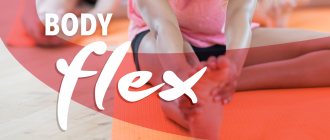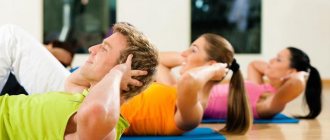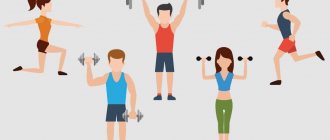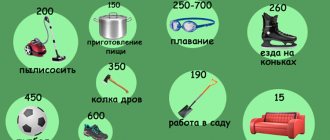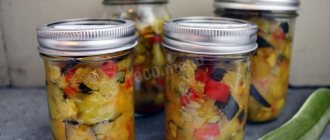Lack of movement is a problem for a huge number of modern people. It provokes all sorts of health problems, as well as excess weight gain, which will require a lot of effort to combat. Nowadays, many techniques exist and are being created that allow you to adjust your weight and get rid of excess fat accumulation. However, properly selected exercise remains one of the most effective ways to lose weight. Diets, taking medications, and various operations leave the body without proper load: because of this, after losing weight, the skin can remain flabby and the muscles weak, which does not correspond to modern ideas about beauty.
Unpleasant consequences can be prevented if you regularly devote at least a little time to physical activity. You can increase your calorie consumption when cycling, which will help you combine business with pleasure, because regular walks not only improve your mood and well-being. Cycling is also an excellent way to lose weight; it helps to create a slimmer, stronger figure for both men and women.
A bicycle, increasing the body weight of an adult man by only 20%, is capable of simultaneously increasing his speed of movement without much energy consumption by half (from 6 to 12 km/h), and with intense load - by 3-4 times. In terms of this ratio, no vehicle could surpass the bicycle.
The load during this activity is not high-intensity, so a bicycle is ideal if you cannot run for some reason or want to give your legs a break after a more difficult activity. Many people are interested in how many calories are burned when riding a bicycle, and this figure will be individual in each case and determined by a number of factors, however, the costs will be impressive.
What are calories?
A calorie is a unit of measurement for the amount of energy contained in food, as well as the energy expended for daily living or exercise. The number of calories we absorb from food depends on what we eat and how much.
Different exercises and activities require different amounts of calories expended. For example, walking slowly for 10 minutes will burn significantly fewer calories than rollerblading at full speed for an hour.
If you consume more calories than you can burn, you will gain weight, and if, on the contrary, you create a calorie deficit, you will lose it.
Half a kilogram of human body fat is equivalent to 3,500 kcal, so for every extra 3,500 kcal you eat, you will gain 0.5 kg of weight. Accordingly, if you want to lose half a kilo, you need to lose 3500 kcal more than you ate.
The safest way to lose weight is to simultaneously cut calories and increase physical activity through regular exercise.
How calories are burned
Calories are related to weight. 7000 kcal can be interpreted as 1 kg of weight. Therefore, if a person losing weight ate 2000 kcal per day, then in order to lose 1 kg, he needs to burn 9000 kcal. But this is only in theory; in reality, losing weight proceeds much more slowly. Normally, those who are losing weight with obesity lose 0.5 kg per week, and the rest - only 200 g. Exceeding these figures means causing harm to health.
When a person gets on a bicycle, the heart rate increases, metabolism speeds up, various muscle groups are activated and energy consumption begins. This process is accompanied by the burning of calories. The body has a lot of lipids (fats) that are found in every cell. When breathing quickens and the blood becomes saturated with oxygen, they oxidize and burn. To burn a gram of lipids, the body expends 9 calories.
Calories are burned intensely. Their expenditure increases with fresh air and communication, so it is useful to make friends in hobbies, go for walks together, and have fun.
Of course, those losing weight definitely need to monitor their diet and diet. You can't lose weight without switching to healthy foods. It is also undesirable to eat before training; it is effective to wait several hours after eating. A good breakfast before the trip: a small portion consisting mostly of protein foods, a minimal amount of carbohydrates.
Otherwise, there is a risk of remaining hungry or, conversely, suffering from heaviness in the stomach. The right snack will give you strength and help you lose weight. Another option is to eat dried or fiber-rich fruits 2 hours before training. The next meal should be 2 hours after the trip, it can be a full lunch or dinner.
Losing weight is only possible when physical activity complements proper nutrition. Diet is about 70% success. Only cycling training will have a beneficial effect on the body, but it is unlikely to significantly affect the extra pounds.
How many calories can you burn by cycling?
Also, as with any other exercise, the amount of energy expended depends on three main factors, they are listed below:
- Your weight. The more you weigh, the more energy you will expend while pedaling.
- Speed. The faster you pedal, the more energy required and the more fat you burn.
- Duration of training. The longer the workout, the more energy you expend.
How many calories can you burn by driving 1.5 km?
The number of calories you burn to cover a 1.5 km distance depends on your weight and speed, but as a guide, here's the information:
- A person weighing 68 kg, at a speed of 22.5 km/h, will burn 48 kcal in 1.5 km, while if he travels the same distance at a speed of 32 km/h, he will burn 56 kcal.
- A person weighing 90 kg riding at a speed of 22.5 km/h will burn 64 kcal over a distance of 1.5 km, and if he accelerates to 32 km/h, he can burn 75 kcal per hour over the same distance.
Kcal consumption table
We bring to your attention a table of energy consumption per hour of driving at different speeds:
| 50 | 60 | 70 | 80 | 90 | |
| 9 km/h | 138 | 161 | 188 | 213 | 238 |
| 15 km/h | 238 | 278 | 318 | 357 | 397 |
| 20 km/h | 403 | 470 | 548 | 621 | 695 |
Some numbers on how many calories you burn while cycling
The number of calories burned depends on the weight of the exerciser, speed and time. You should also monitor your pulse so that it is between 120 and 145 beats. On average, you can build on the following results for 1 hour of training:
- With a calm ride (10-15 km/h) you can burn 200 calories.
- With an average load (20 km/h) you can burn 300 calories.
- With intense training (30 km/h) you can burn 400 calories.
- With interval training (alternating 2 minutes - 35 km/h, 3 minutes - 15 km/h) you can burn 600 calories
About online calorie burning calculators
First you need to find out how much energy you should receive per day: https://www.calc.ru/kalkulyator-kalorii.html
Good online calculators can be found here:
- https://www.mcvita.ru/know/biking-calk.php (depending on speed)
- https://beregifiguru.ru/ (from mass, time)
How does weight affect the number of calories burned?
When calculating the number of calories burned during a cycling session, it is very important to take into account your weight. The fact is that depending on body weight, different amounts of energy are spent.
For example, you weigh 90 kg and your workout buddy weighs 80 kg. You've walked 5 miles together, but you'll burn more fat because you're heavier than your friend. The reason people with more mass burn more calories is because moving a body with more mass requires more energy.
| 68 kg | 80 kg | 90 kg | 102 kg | 113 kg | |
| 9 km/h | 250 | 292 | 333 | 375 | 417 |
| 16 km/h | 486 | 567 | 648 | 729 | 810 |
| 19 km/h | 572 | 667 | 762 | 857 | 953 |
| 22 km/h | 714 | 833 | 953 | 1072 | 1191 |
| 26 km/h | 857 | 1000 | 1143 | 1286 | 1429 |
If you weigh 68 kg and your speed is 9 km/h, then in an hour of cycling you will cover a distance of 9 km and burn 250 calories.
At a speed of 16 km/h in an hour you will travel 16 km and burn 572 calories.
Finally, at a speed of 22 km/h in an hour you will travel 22 km and burn 714 calories.
A little about the physiology of fat burning
Your training will only be successful when you put the following information into practice. We present it very briefly and precisely:
- The goal of training is to reduce fat reserves in adipose tissue.
- During the first 30-50 minutes, do not expect any effect, since the body “throws into battle” the energy received from a “faster working” battery - the reserve of animal starch glycogen in the liver burns up.
- Only after 50-60 minutes does the fat begin to “slowly and reluctantly” break down. But fat is very energy-intensive. Each gram of fat provides 9 kilocalories of heat.
Calculation example: your weight is 120 kg with a height of 192 cm and age 40 years. This means that the ideal weight is 90 kg, and the excess is 30 kg, or 30,000 grams. That is, you need to burn 30,000 x 9 = 270 thousand kilocalories of heat.
Considering that a moderate trip at a walking pace consumes 270 kcal for a weight of 70 kg and about 350 kcal for a weight of 120 kg per hour, then a two-hour walk consumes 700 kcal. There should be such walks (270,000/700 = 385) So, 385 two-hour leisurely walks will allow you to lose 30 kg of weight.
How does speed affect energy costs?
The faster you go, the more distance you can cover in a shorter time. However, if you're on a group ride and someone covers the same distance as you but at a slower speed, that doesn't mean you burned more calories.
If a person weighs the most in the group, then perhaps he will expend the most energy among the participants, even if he finishes later. In general, if you are limited in time, the following pattern is true: the faster you move, the more energy you will expend.
It follows from this that if, with your own weight of 80 kg, you devoted an hour to cycling, and your speed was 16 km/h, then you will spend 567 calories (and, accordingly, cover a distance of 16 km).
Determination of calories burned according to speed
When resorting to cycling as a means of losing weight, remember: calorie consumption is higher when you move at high speeds. Therefore, at a minimum speed of 6 km/h, the consumption is small - only 270 kcal. The speed is 2 km/h higher - the consumption is 90 kcal more. Accelerating another 2 km leads to an increase in calories burned - 450 kcal this time. At an almost racing pace, you can burn 720 kcal/hour. A person who is truly overweight requires more calories to perform active actions, so an increase in weight by 10 kg each time is accompanied by an increase in wasted kcal by 60-100 kcal.
It is also not difficult to calculate the number of calories burned using online calculators. As a rule, they provide fields for entering the distance covered, the weight of the cyclist, and sometimes the riding speed. Moreover, a lot of applications available for downloading and installation on a smartphone can handle a similar function. Cyclists often keep diaries of their training, either in print or in blog format.
Calories burned depending on distance covered
Depending on the distance you travel, you use different amounts of energy: this will be affected by the ratio of time spent to speed, and the distance you travel. For example, if you weigh 90 kg and drove 9 km in an hour, and someone else drove at a speed of 16 km per hour, but only half an hour, then you will spend more energy than this person, even though you were driving slower. The distance you cover will simply be greater.
The best way to burn a ton of calories at once is to ride for a long distance, but be careful as you can get injured if you get too tired. Therefore, in the beginning it will be better to arrange small races instead of long ones. This will help avoid injuries that could lead to the inability to exercise for a long time.
In general, the further you eat, the more energy you spend. For example, one day you drove 8 km. And the next one is already 16 - accordingly, the number of calories burned will double.
Rules for cycling to lose weight:
- Correct posture. This is the key to getting the maximum effect from training for your figure. If planted incorrectly, the benefit will be minimal. The body is positioned parallel to the ground, for which the bicycle handlebars are lowered and the seat higher. Straighten your legs completely when moving. In the correct position, the buttocks, back, abdomen and limbs work to the limit of their capabilities.
- The right bike. A vehicle with a gearbox and sensors for the rider’s physical condition allows one to know and adjust the parameters of a bicycle trip. Your heart rate and pulse will be under control.
- Correct load. Long steep descents and ascents are for experienced cyclists. To make your figure beautiful and toned, gradually increase the pace, speed and strength of your workouts. Aim to move within 15-25 km/h: at this pace, muscles work and calories are burned. Regularity and quality of training is a guarantee of success in losing weight.
- Right time. Many people are interested in how much to ride a bike to lose weight. To begin with, three times a week for half an hour will be enough, then go for a healthy walk for 20-40 minutes every day. When the body adapts, you can ride up to two hours a day.
The effect of road angle on the number of calories burned
Driving at an angle is nothing more than driving up or down a mountain. Driving uphill means you're riding at a positive angle, but of course it's more difficult. Driving down a mountain is a negative angle; on the contrary, driving like this is easier than usual.
For example, if your goal is to burn 750 calories in 30 minutes, your route is fairly flat, so you'll have to cover more distance. At the same time, if the route you choose is at a high angle, you will not have to travel the same distance as in the first case.
Incline training is very beneficial as it builds endurance and helps you achieve increased speed so you can cover more distance in a shorter time.
However, driving uphill is much more difficult than driving on a regular road or downhill. The point is that you have to do more work due to overcoming gravity. Usually calculators for calculating calories do not take into account the slope of the route. Therefore, for example, if you go on a bike ride, where you have to go uphill on the way back, then, most likely, going down the mountain on the way to the goal is compensated by your return uphill.
Tips for losing weight on a bike
Tip #1 – Eat Before Workout
A healthy and nutritious breakfast improves metabolism. Therefore, if you start training on an empty stomach, then your body, due to the fact that it has not received the necessary energy supply, will store fat rather than burn it. A hungry body tries to retain all the necessary resources that may be needed in more extreme situations, and the supply of fat cells is no exception.
Tip #2 – choosing clothes
Quite a large number of people are confident that if they wear warm clothes, they will be able to speed up their metabolism and, therefore, lose weight faster. This myth originates from scale readings that show a decrease in body weight after exercise. Of course, clothing helps you lose weight, but weight loss is not due to burning body fat, but due to dehydration. For a cyclist, dehydration is very dangerous. Therefore, take off your warm clothes, so you can not only travel more, but lose weight faster.
Tip #3 - Be careful with gluten
The number of people who notice unpleasant symptoms from excessive gluten consumption is growing. People who are gluten intolerant have difficulty digesting grain products. In addition, they experience a constant feeling of discomfort and get tired quickly. If you experience similar symptoms after consuming cereal products, then it is better to switch to foods such as bananas, potatoes, oranges, and so on.
The effect of age and heart rate on the number of calories burned
It is very important to be aware of your maximum possible heart rate when starting training. As you get older, you will notice that your maximum heart rate level gradually decreases with age.
In order to calculate your approximate maximum heart rate, you need to subtract your age from 220. That is, if you are 40, your maximum heart rate is 220 -40 = 180 beats per minute. This number is affected by age, meaning as you get older, your heart can't beat too fast.
“The average person’s resting heart rate is between 60 and 100 beats per minute, and this number remains in this range throughout life.”
Anaerobic exercises are exercises in which you subject your body to high-intensity exercise in a short period of time, which utilizes the energy sources from your muscles to a greater extent.
Aerobic exercises are the exact opposite of anaerobic exercises; they are performed for longer periods of time and involve large muscle groups. By doing aerobic exercise, you train your heart and cardiovascular system, thereby helping to increase the rate of oxygen delivery to every cell of the body.
It is impossible to measure your heart rate using all kinds of online calculators, however, you can monitor it using a fitness bracelet or smart watch.
Bicycle simulators - benefits and selection criteria
The great advantage of cycling trainers is that you can train all year round and in any weather. A person who does not know how to ride a bicycle can exercise on an exercise bike. You don't need to learn how to balance or control the steering wheel.
An exercise bike belongs to the group of cardio equipment, which, unlike strength equipment, has a gentler effect on organs and muscles. Regular exercise on an exercise bike helps:
- improve the overall functional state of the body;
- increase vitality, endurance and immunity, prevent chronic diseases, get rid of stress;
- normalize the functioning of the respiratory system, improve blood circulation, strengthen the cardiovascular system, muscles, bones and joints;
- maintain physical fitness, get rid of excess weight and shortness of breath, form a beautiful figure, fat deposits on the hips are especially intensively burned, buttocks and leg muscles are strengthened.
Today, exercise bikes are available to everyone. You can exercise at a sports center under the guidance of an instructor, or you can buy a personal unit and train at home. Using special devices, the state of the body is monitored during the training process. The heart rate monitor allows you to monitor your heart rate and monitor your calorie consumption. Modern exercise bikes provide the ability to adjust the load and choose a training program:
- imitation of climbing a mountain helps strengthen muscles;
- Riding on a horizontal surface develops endurance.
The upright exercise bike perfectly simulates cycling. The design allows acceleration from the seat, which is height-adjustable. When training on a horizontal simulator, a person pedals, sitting freely in a special chair. The spine is not loaded, the load is directed to the legs. To get good results, you should exercise regularly. For people who are not physically prepared, it is better to start with 15-minute workouts 3-4 times a week. In the future, the lesson time is increased to 40-60 minutes.
Difference between running and cycling
The bicycle at the end of the 20th and beginning of the 21st century became almost perfect, so its disadvantages are a continuation of its advantages. It is precisely because of the efficiency of a bicycle relative to the movement of a pedestrian that the calorie consumption is not as great as compared to running.
If we consider these two types of activities by the number of calories burned per minute, then, of course, when running you will spend more energy. But still, the best way to burn fat in the first place is the one that you like most and which you are able to do constantly.
Weighing 68 kg, going for an hour-long run at 8 km/h will burn 593 calories. If at the same time you do cycling training at the same speed and for the same time, you will spend only 250 calories. But if you enjoy cycling and can incorporate cycling into your lifestyle, you will burn significantly more fat than 2 weeks of running before you gave up.
Benefits of a bicycle
40 minutes on a bike and intense training will go differently. Many people mistakenly believe that because riding requires little physical effort, it doesn't burn calories. Of course, this is not true. But moreover, cycling is useful not only for those losing weight. This is an effective way to keep yourself in shape, diversify your walks, and improve your health. Riding stimulates the heart and muscles. Biking can be an exercise, a hobby, or a way to get around. Its main advantages:
- it is an environmentally friendly and silent vehicle;
- the bicycle requires almost no maintenance or repair;
- a cyclist's body produces more adrenaline than a runner's body;
- it will allow you to avoid the annoying need to stand in traffic jams;
- You can ride at any time, and the gym has a specific schedule.
That’s why a healthy solution is to turn cycling not into exercise, but into part of your daily life, and commute by bike to work. Many Europeans resorted to it. But walking will have the same effect on weight loss.
And yet, a bicycle is doubly useful for an office worker. There is much more sedentary work than ten years ago, city residents move very little, but an active lifestyle is the key to health and longevity. Passivity leads to apathy and excess weight. They appear gradually, but it is difficult to get rid of them. Obesity affects not only your appearance: cholesterol clogs your blood vessels, and waste products begin to accumulate in your organs. Cycling will become a regular workout that will provide:
- disease prevention;
- body tone;
- fat burning;
- good mood;
- surge of strength.
The terrain and type of bike also affect the effectiveness of the training.
When choosing a bike for weight loss, you need to take into account your temperament and riding style. If you prefer to ride on roads with good surfaces, then you need to immediately count on long training sessions, since when riding there will be less variety in the load on the muscles than in the case of mountain biking.
A mountain bike will allow you to race along forest paths, effortlessly climb steep climbs and, what is especially valuable, stand up and “screw in” the pedals while climbing. This change in the pace of work and breathing during the race leads to improved blood supply to the muscles and an increase in the effect of the workout. But, in any case, the bike must be multi-speed.
Below, in descending order of calories burned, are the different types of cycling workouts:
- Riding a mountain bike
- Driving on the highway
- Riding on bike paths
- Exercise bike training
On a mountain bike or cross-country, you expend maximum energy due to greater physical activity. The track ride takes second place, as the route is smoother, but it is possible to change the level of incline.
Riding on bike paths is even more difficult in terms of weight loss compared to mountain biking, since all the paths do not have any obstacles and are usually quite smooth. Working out on an exercise bike is convenient because you can fine-tune both the angle of the climb and the force on the connecting rods.
How to ride a bike to lose weight?
Cyclists train in the fresh air and in any weather, and this helps strengthen the immune system and improve overall health. To understand how to lose weight on a bicycle, you need to know exactly how it affects the body:
- This is a full body workout;
- the ability to give the figure the desired look;
- exercises increase immunity and improve health;
- improves posture and coordination of movements;
- exercises have a positive effect on the cardiovascular and respiratory systems;
- effective reduction of cellulite manifestations;
- metabolism accelerates and energy costs throughout the body increase;
- muscles become prominent, elastic and beautiful;
- cells are enriched with oxygen;
- appearance and well-being improve.
In order for a bicycle to bring maximum benefits to your figure, you need to choose a model whose frame is 10 cm below your waist. In this case, the distribution of the load on the body will be uniform.
The wheels should not be too large, otherwise the load will be minimal and the effectiveness of the workout will decrease. Therefore, it is better to choose narrow wheels with a metal rim.
The optimal speed for losing weight is 15-20 km/h. At this speed, your heart rate should be 120-150 beats per minute. In the middle of your workout, you can stop and check your heart rate. It is important that it does not go beyond 150 beats per minute. If this happens, then the current load is not for you yet.
It is advisable to ride a bicycle in the evening, when the heat subsides and you can calmly do what you love. When cycling in high temperatures, you will get tired faster and will not complete the planned load. Working out in the morning can make you overtired and feel sluggish throughout the day. Therefore, the best time for cycling training is the evening (after 19:00).
Accelerations (cycling) will improve efficiency. The main part of the workout can be driven at a speed that is comfortable for you. But in the end you need to give the body a double load, increasing the speed to the maximum. At the limit of your capabilities, you should drive within 1-2 minutes. This load uses almost all muscles. The principle of the load is this: pedal at maximum speed for 30 seconds, then return to a comfortable speed and ride for 2 minutes. We repeat these 2 steps 3-5 times. This interval training allows you to use maximum energy, which is consumed mainly from fat reserves.
Rough terrain allows you to increase the load. Riding on a flat track without obstacles is standard training, but bumps and obstacles require more effort. For trained users, you can move on to the next stage - mountain biking. In this case, the load will be even higher. About 600-700 kcal are burned per hour. Mountain biking is developing at a tremendous pace among men and women.
Which is the best route?
The answer is simple - the best route is the one you like, since such training will be easier for you to do regularly. Losing weight is only possible with constant exercise.
If you are focused on fat burning, then from this point of view, the best choice would, of course, be trips in the mountains and over rough terrain due to the higher intensity of the load. On the other hand, it may be easier for you to regularly organize races on the highway than in the mountains.
And of course, it’s easier to do workouts that you get more pleasure from. The key factors in fat burning are:
- Eating immediately after training;
- Various lengths of races;
- Applying due effort to classes;
- Carrying out joint bike races;
- Regularity.
Basic conditions for effective fat burning
In order to burn a large amount of energy reserves when riding a bicycle and not harm your health, you should definitely follow some important recommendations:
- If there is poor physical fitness when a person just starts cycling, it is recommended to ride for no more than 20-30 minutes several times a week. The number of calories burned will be small, but the body will be able to quickly get used to training without health problems. Every week you can add 10-15 minutes, this will have a positive effect on the condition of the heart, blood vessels, and will also be beneficial for the joints.
- The duration of the ride should be increased to 1.5-2 hours. 1 hour is the minimum training period. Fat layers will be broken down after 30 minutes from the start. For this reason, short rides will not bring positive results. However, you should not train for more than two hours, because during this period proteins in muscle tissue are burned.
- For better training efficiency, it is recommended to purchase a heart rate monitor. Using this device you can measure your heart rate. In addition, it will help determine a sufficient load to burn fat deposits, and also prevent health problems. Experts recommend keeping the readings within 120-150 beats per minute. It is advisable to periodically stop and count your heart rate while riding, but if you have a heart rate monitor, you can do this throughout the entire ride.
- A few hours before training, people who want to lose weight are advised to stop eating. This period of food abstinence will make riding easier.
What equipment is most necessary for safe riding?
It is better to choose specialized cycling clothing that is made from special wear-resistant fabric that promotes better heat transfer and comfort under increased loads. Don't forget about a bike helmet - it's not a luxury, but necessary protection.
Bicycle helmets reduce the likelihood of head injury by 85%!
It is better to choose all the necessary equipment in sports stores. There you can consult with experienced consultants and try everything on. However, you can choose the clothes yourself. The main criterion for this is comfort and practicality (clothing should not interfere with you or distract you from the road).
Make sure you are easy to see on the road.
During races in weather conditions with poor visibility and in the dark, your bike must be equipped with lighting devices (headlights and reflectors).
Which riding style is more conducive to calorie consumption?
To actively lose weight on a bicycle, you can pedal for 2 hours, or you can use interval training. It allows you to burn the maximum amount of calories in the least amount of time. This type of training is only possible for those cyclists who already have good physical fitness and are able to pedal intensely for 1.5-2 hours.
When doing interval training on a bike, you only need to do 30 minutes. At this time, you should alternate between a quiet ride for 2 minutes and active pedaling for 30 seconds. These intervals are then repeated.
Ideal conditions for burning fat during cycling training
Cycling outdoors burns off a lot of calories. But there are still certain conditions that influence this process.
Among the main ones are:
- The duration of the workout should be at least 30 minutes. But it's better to ride a bike for 1-2 hours,
- Type of bicycle. Simple city bikes won't burn enough energy because they don't put enough stress on the muscles. But professional models, on the contrary, will promote increased fat burning.
- Bike weight. It is recommended to use lighter structures.
Speed during training
Speed indicators may be influenced by the following factors:
- the presence of weights on the bike,
- regime change,
- skiing intensity indicators,
- track condition,
- presence of slopes.
Important! For better energy consumption, cycling should be done at intervals. This means that you need to combine fast and measured driving.
The most ideal ratio is considered to be 1:3. For example, if you drive at a slow pace for 1 minute and drive at high speed for 15 seconds. This method has a positive effect on metabolic processes and promotes rapid calorie burning. But it is not recommended to use it if you are not physically fit.
Terrain features
For skiing, you should use rough terrain with various flaws and depressions. If the ride is monotonous on a flat highway, then the body will quickly get used to it and energy expenditure will be minimal. Various descents and ascents place increased stress and cause increased calorie consumption.
Changing poses
It is recommended to change the position periodically. This is necessary so that the muscles of the lower extremities cannot get used to the loads exerted, and will lead to the fact that many more calories will be spent. But the muscles of the arms and back will rest, this will prevent stress.
Racing with friends
Biking with friends, especially racing, burns more calories. This can make your training more effective and efficient. During a ride, a change in rhythm occurs, this increases energy costs, which exceed those during a single trip. And if another participant in the race turns out to be stronger and more physically prepared, then he will set a pace that will be higher than comfortable.
In order to burn the required number of calories per trip without harming your health, you should maintain a uniform intensity of exercise. It is advisable to give preference to interval cycling training, they have a positive effect on metabolic processes, accelerate fat burning, and improve the functioning of the heart and blood vessels. But also don’t forget about proper nutrition, drinking plenty of fluids and preparation.
How to make cycling more efficient?
If you intend to pedal to eliminate excess fat reserves, choose the right bike for your riding style and personal preferences. Those who like to ride on roads with good asphalt will enjoy long workouts, and the loads will be less varied than when riding on rough terrain on a mountain bike.
For those who like to travel along forest paths and overcome steep climbs, a multi-speed mountain bike is suitable. This style of riding burns calories well due to frequent changes of positions, pedaling modes, changes in breathing intensity and heart rate.
Physical activity can be increased in a completely banal way: put on a backpack with something heavy (even a couple of bricks). Weight gain will lead to increased energy expenditure. We also recommend finding a riding partner, and then you won’t constantly think about the calories burned, but will start enjoying the bike ride. You can come up with competitions and sports disputes with each other.
The main thing is to drink regularly, especially if you cover long distances of 10 or 20 km on a bicycle. Even if you go on a short bike ride of 1-5 kilometers, we recommend taking a bottle of water. This can be mineral water or pure water with lemon juice, but do not rush to drink it in large sips. To stimulate the breakdown of fats, put a little water in your mouth and then swallow it in small sips.
Increased calorie expenditure
There are several simple rules that help you burn more calories in the same period of time. You need to conduct three or four trainings weekly, which will be fully completed. If desired, loads are performed every day for one hour, then the load should not be critical and be distributed evenly throughout the entire workout.
Subsequent calorie consumption occurs due to fat cells, but after an hour and a half of training, the exhausted body switches to the breakdown of protein cells. This is detrimental to the body, so it is worth alternating the intensity and not prolonging the skating to the point of exhaustion.
To increase calorie expenditure, you can use small weights on your two-wheeled companion, which will help expend more energy. Choosing an area with an uneven road, without asphalt, and crossing obstacles will also help in this difficult task.
You should also remember to drink enough water during exercise. Moisture not only saturates the cells, but also helps in the breakdown of fat cells
In addition, it is important not to forget about the dangers of dehydration. The body of any person is not inclined to give away what it lacks
In other words, if a person consumes too little water, then he will not release moisture either. It will be stored in cages, like a camel’s hump, and consumed in the smallest possible volumes. It also interferes with intense weight loss during workouts.
Uphill terrain that cyclists travel through, as well as downhill terrain, also increases energy expenditure. This way, the body does not have time to get used to the pace of the load and is more willing to give away calories. It is also worth changing your body position more often while riding. Muscles in one position quickly get used to monotonous work and burn less energy.
As for food, when losing weight through cycling you should not indulge in sweets, fried foods and alcohol. The first two points interfere with the breakdown of fat deposits, and alcohol removes necessary water from the body and triggers many biochemical reactions. These reactions not only negatively affect the ability to lose weight, but can also have an unexpected effect on the human body itself, up to a sharp deterioration in the body’s condition.
Lack of movement is a problem for many modern people. It provokes all sorts of health problems, as well as excess weight, which will take a lot of time to combat. But you can prevent unpleasant consequences if you regularly devote at least a little time to physical activity. A great way can be a bicycle, which will help you combine business with pleasure. Many people are interested in how many calories are burned when cycling. This figure will be individual in each case and determined by a number of factors, however, energy costs will be significant in any case.
When cycling, your heart rate increases, which causes your metabolism to increase and energy expenditure to increase. Cells are saturated with oxygen, which oxidizes lipids. Fats break down with the simultaneous release of energy, which is spent on driving. When a gram of lipids is broken down, about 9 kcal is burned.
How many calories cycling burns will be determined by the following factors:
- Pulse
. The higher the heart rate, the more energy is expended. - Depth and frequency of breathing.
If you breathe deeply and frequently, your muscles are better saturated with oxygen and fats are broken down faster. - Individual characteristics of a cyclist.
Burning calories on a bicycle also depends on the athlete’s weight, height, age, and level of physical fitness. - Duration of the ride and its intensity.
- Rider's weight.
Those who are overweight use up energy faster while riding.
Table of calorie consumption during physical activity
| Kind of activity | Kilocalorie consumption per hour | ||||
| per 1 kg of weight | for 50 kg weight | for 60 kg weight | for 70 kg weight | for 80 kg weight | |
| SPORTS | |||||
| SWIMMING AND WATER SPORTS | |||||
| Swimming (0.5 km/h) | 3 | 150 | 180 | 210 | 240 |
| Slow breaststroke | 6 | 280 | 336 | 392 | 448 |
| Swimming (2.5 km/h) | 7 | 329 | 394 | 460 | 526 |
| Slow crawl swimming | 7 | 350 | 420 | 490 | 560 |
| Swimming fast crawl | 8 | 407 | 489 | 570 | 651 |
| Water aerobics | 8 | 379 | 454 | 530 | 606 |
| Water skiing | 5 | 254 | 304 | 355 | 406 |
| Water polo | 9 | 429 | 514 | 600 | 686 |
| RIDING AND RIDING | |||||
| Cycling (9 km/h) | 3 | 132 | 159 | 185 | 211 |
| Cycling (15 km/h) | 5 | 229 | 274 | 320 | 366 |
| Cycling (20 km/h) | 8 | 386 | 463 | 540 | 617 |
| Horse riding at trot | 6 | 280 | 336 | 392 | 448 |
| Roller skating | 4 | 221 | 266 | 310 | 354 |
| Skiing | 7 | 346 | 416 | 485 | 554 |
| Skiing down the mountain | 5 | 260 | 312 | 364 | 309 |
| Skating | 3 | 160 | 192 | 224 | 256 |
| Ice-skating race | 11 | 550 | 660 | 770 | 880 |
| Figure skating | 4 | 179 | 214 | 250 | 286 |
| Rowing (4 km/h) | 3 | 150 | 180 | 210 | 240 |
| Canoeing (4 km/h) | 3 | 132 | 159 | 185 | 211 |
| CLASSES IN THE GYM | |||||
| Stretching | 2 | 90 | 108 | 126 | 144 |
| Static yoga | 3 | 160 | 192 | 224 | |
| Ashtanga yoga | 6 | 300 | 360 | 420 | 480 |
| Gymnastics (light) | 3 | 171 | 206 | 240 | 274 |
| Medium intensity charging | 4 | 214 | 257 | 300 | 343 |
| Gymnastics (vigorous) | 7 | 325 | 390 | 455 | 520 |
| Aerobics classes | 5 | 260 | 312 | 364 | 416 |
| Jumping rope | 8 | 386 | 463 | 540 | 617 |
| Strength training on machines | 7 | 371 | 446 | 520 | 594 |
| Elliptical training | 7 | 370 | 444 | 518 | 592 |
| GAME SPORTS | |||||
| Hockey | 4 | 220 | 264 | 308 | 352 |
| Field hockey | 7 | 350 | 420 | 490 | 560 |
| Badminton (fast pace) | 7 | 346 | 416 | 485 | 554 |
| Football | 6 | 321 | 386 | 450 | 514 |
| Handball | 7 | 346 | 416 | 485 | 554 |
| Basketball | 5 | 271 | 326 | 380 | 434 |
| Volleyball | 4 | 182 | 219 | 255 | 291 |
| Table tennis (doubles) | 3 | 146 | 176 | 205 | 234 |
| Badminton (moderate pace) | 4 | 182 | 219 | 255 | 291 |
| Tennis | 6 | 290 | 348 | 406 | 464 |
| Struggle | 16 | 800 | 960 | 1120 | 1280 |
| WALKING AND RUNNING | |||||
| Race walking | 6 | 297 | 357 | 416 | 475 |
| Running (8 km/h) | 7 | 346 | 416 | 485 | 554 |
| Running (16 km/h) | 11 | 536 | 643 | 750 | 857 |
| Cross country running | 9 | 429 | 514 | 600 | 686 |
| Running up and down the steps | 8 | 386 | 463 | 540 | 617 |
| Running up the steps | 13 | 643 | 771 | 900 | 1029 |
| PHYSICAL ACTIVITY AND ENTERTAINMENT | |||||
| Ballet classes | 11 | 536 | 643 | 750 | 857 |
| High intensity dancing | 7 | 346 | 416 | 485 | 554 |
| Modern dancing | 5 | 229 | 274 | 320 | 366 |
| Disco dancing | 6 | 286 | 343 | 400 | 457 |
| Ballroom dancing | 4 | 196 | 236 | 275 | 314 |
| Low intensity dancing | 3 | 154 | 184 | 215 | 246 |
| Slow dancing (waltz, tango) | 3 | 143 | 171 | 200 | 229 |
| Slow walking | 3 | 134 | 161 | 188 | 214 |
| Hiking (4 km/h) | 3 | 168 | 201 | 235 | 269 |
| Walking (at a speed of 5.8 km/h) | 5 | 225 | 270 | 315 | 360 |
| Walking, 7.2 km/h | 6 | 280 | 336 | 392 | 309 |
| Walking uphill (15% gradient, 3.8 km/h) | 5 | 270 | 324 | 378 | 432 |
| Walking the dog | 3 | 143 | 171 | 200 | 229 |
| Shopping | 3 | 150 | 180 | 210 | 240 |
| Machine control | 2 | 107 | 129 | 150 | 171 |
| Driving a scooter or motorcycle | 3 | 160 | 192 | 224 | 256 |
| Fishing | 2 | 86 | 103 | 120 | 137 |
| Diving | 5 | 257 | 309 | 360 | 411 |
| Bowling | 4 | 180 | 216 | 252 | 288 |
| Mountaineering | 7 | 324 | 388 | 453 | 518 |
| CARE OF CHILDREN | |||||
| Playing with children while sitting | 2 | 101 | 121 | 141 | 161 |
| Feeding and dressing the baby | 2 | 101 | 121 | 141 | 161 |
| Bathing a child | 3 | 134 | 161 | 188 | 215 |
| Carrying small children in your arms | 3 | 134 | 161 | 188 | 215 |
| Playing with children with walking and running | 4 | 201 | 241 | 281 | 321 |
| Playing with your child (moderate activity) | 4 | 201 | 241 | 281 | 321 |
| Games with a child (high activity) | 5 | 268 | 321 | 375 | 429 |
| Walking with a stroller | 2 | 108 | 129 | 151 | 173 |
| Walking with children in the park | 4 | 179 | 214 | 250 | 286 |
| HOMEWORK | |||||
| Window cleaning | 4 | 200 | 240 | 280 | 320 |
| Cleaning glass and mirrors | 4 | 189 | 227 | 265 | 303 |
| Cleaning carpets with a vacuum cleaner | 3 | 146 | 176 | 205 | 234 |
| Dusting | 1 | 57 | 69 | 80 | 91 |
| Cooking food | 1 | 57 | 69 | 80 | 91 |
| Ironing clothes (standing) | 2 | 104 | 124 | 145 | 166 |
| Washing dishes | 2 | 100 | 120 | 140 | 160 |
| Easy cleaning | 3 | 171 | 206 | 240 | 274 |
| Sweeping | 2 | 121 | 145 | 169 | 193 |
| Plumbing cleaning | 4 | 196 | 236 | 275 | 314 |
| PROFESSIONS AND OCCUPATIONS | |||||
| Singing | 2 | 86 | 103 | 120 | 137 |
| Playing the guitar while standing | 3 | 144 | 173 | 202 | 231 |
| Playing guitar while sitting | 1 | 72 | 87 | 101 | 115 |
| Piano playing | 2 | 108 | 129 | 151 | 173 |
| Wood sawyer job | 7 | 343 | 411 | 480 | 549 |
| Bricklayer's work | 6 | 286 | 343 | 400 | 457 |
| Wood chopping | 4 | 214 | 257 | 300 | 343 |
| Work as a massage therapist | 4 | 210 | 252 | 294 | 336 |
| Work of a carpenter or metal worker | 3 | 171 | 206 | 240 | 274 |
| Shoemaker's work | 3 | 129 | 154 | 180 | 206 |
| Bookbinder's work | 2 | 121 | 146 | 170 | 194 |
| Hair Styling | 2 | 101 | 121 | 141 | 161 |
| Hand sewing | 2 | 79 | 94 | 110 | 126 |
| Knitting | 2 | 86 | 103 | 120 | 137 |
| Reading aloud | 2 | 79 | 94 | 110 | 126 |
| Working at the computer | 1 | 72 | 87 | 101 | 115 |
| Fast typing on the keyboard | 2 | 100 | 120 | 140 | 160 |
| Office work | 1 | 62 | 75 | 87 | 99 |
| Classroom lesson, lesson | 1 | 57 | 69 | 80 | 91 |
| REST, HYGIENE, FOOD | |||||
| Dream | 1 | 32 | 39 | 45 | 51 |
| Lying awake | 1 | 55 | 66 | 77 | 88 |
| Sex (passive) | 1 | 54 | 64 | 75 | 86 |
| Sex (active) | 2 | 107 | 129 | 150 | 171 |
| Sitting at rest | 1 | 72 | 86 | 100 | 114 |
| Eating while standing | 1 | 66 | 80 | 93 | 106 |
| Personal hygiene | 1 | 66 | 80 | 93 | 106 |
| Taking a shower | 1 | 66 | 80 | 93 | 106 |
| Talking while eating | 1 | 66 | 80 | 93 | 106 |
| Dressing and undressing, fitting | 2 | 86 | 103 | 120 | 137 |
A little about calories and calorie content
A calorie is the amount of energy a person gets from eating food. The amount of calories consumed must be replaced by physical activity of the person. Otherwise, the person begins to gain excess weight. How were people able to determine how many calories are in a particular product? For this purpose, there is a special thermal chamber in which it is studied how much heat the product emits during combustion.
Calories in foods
A similar thing happens in the human body. When eating food, a certain amount of energy is released from it, which is spent on physical activity, metabolism, and also on heat production. This energy also provides a number of vital processes, such as pumping blood throughout the body and regulating breathing.
There is such a thing as an indicator of basal metabolism. Simply put, this is the minimum amount of energy that is necessary for the body to function. For average-weight women, this number is 1,350 kilocalories, and for men - 1,700. The remaining calories are intended for building and repairing tissue and muscle mass. For this reason, a high-calorie diet is prescribed for burns.
Additional calories entering the body through food are burned during physical activity, this happens with every movement. Their excess gradually turns into fat. Of course, excess fat is very bad, but do not forget that, first of all, it is a reserve of energy allocated for any emergency situations, so a small layer of fat is present in the body of every person.
Additional Information! Approximately 15% of calories are consumed directly during the digestion process. There is a theory that there are a number of low-calorie foods that the body spends more calories digesting than they can provide on their own. This is a myth, because digesting them will also consume approximately 15% of their calorie content.
The benefits of riding a two-wheeled friend
- (calves, buttocks, quadriceps, abdominal muscles, forearms and shoulders) are trained better Firstly, this is due to the fact that the range of leg movements is greater. Secondly, while maintaining balance, the buttocks and abdominal muscles contract. When leaning on the steering wheel and turning, your arms and shoulders become tense.
- More useful for varicose veins and knee problems . Less weight is placed on your feet. The lion's share of the weight falls on the handlebars and saddle. But when the pedals rotate, the blood accelerates its movement through the arteries and veins, and its stagnation in the bloodstream decreases.
- Vegetovascular dystonia . This disease is born for various reasons, but one of them is physical inactivity due to the now widespread sedentary lifestyle. Regardless of the etiology, muscle activity improves the situation.
- Effect on the pelvic area . Blood supply to this area improves. The female sex endures pregnancy and childbirth more easily. Men eliminate problems with prostate adenoma. The functioning of the endocrine glands is normalized, which has a beneficial effect on sex life.
- The lungs expand . Regular pedaling increases lung capacity. Breathing becomes more regular and full, helping smokers cleanse their lungs of traces of the addiction.
- Visual training . The riding speed is greater than the walking speed, which forces the “riders” to quickly peer into the surrounding situation and react adequately to its changes. The eye muscles, on the one hand, tense, and on the other, force the eyes to peer into the distance, then into close objects. As a result, cyclists experience far fewer vision problems than pedestrians.
- Reduces weight . Some people can't bring themselves to go on a diet or cut down on portions. But any physical activity burns calories. Less fat is deposited even with the same amount of food taken and without depriving yourself of your favorite foods.
- Strengthens the immune system . Riding in the fresh air strengthens you, reducing your susceptibility to colds.
- Can be used as a trainer . It is unlikely that you will be able to keep your nerves balanced while cruising up and down the entrance dozens of times every day. And only a select few have palaces at their disposal to clock up kilometers during the day. With the simulator, you won’t be afraid of torrential downpour, ice, storm winds, knee-deep snowdrifts, or the appearance of cars on the sidewalks!
How many calories do you need to burn to lose weight?
Of course, there is no single amount of calories you need to burn to lose weight.
This indicator is individual and depends on:
initial weight of the person losing weight;
The more body weight a person has, the more calories he will need to burn to achieve a visible result.
- body metabolic rate;
- amount of food consumed;
- physical activity during the day;
- age;
- presence of any diseases;
If a person losing weight has any pathologies, then doctors should decide the permissible amount of Kcal that he can spend in one session. Otherwise, enormous harm and irreparable consequences may be caused to his body and health.
In general, experts, nutritionists and therapists assure that to lose weight it is enough to lose 500 Kcal per day, but provided that:
- a person losing weight does not have pathologies that are incompatible with such energy consumption;
- a person eats a balanced diet and does not exhaust himself with pointless diets:
- lifestyle is quite active.
In addition, your initial body weight directly depends on how many calories you need to burn to lose weight.
For example, if people have weight:
- 55 – 60 kilograms – 445 Kcal;
- 65 – 70 kilograms – 500 Kcal;
- 70 – 75 kilograms – 545 Kcal;
- 75 – 80 kilograms – 585 Kcal;
- 80 – 90 kilograms – 630 Kcal;
- 90 – 100 kilograms – 680 Kcal.
These recommended indicators are provided for an hour-long workout at an average pace. Only doctors should calculate energy costs.
Features of cycling training for weight loss
Be sure to remember about the correct drinking regime. Drink a few sips of water every 15-20. The ideal option would be water with fresh lemon juice. Drinking this will help break down fat more efficiently. Stay hydrated during your workout, but avoid drinking heavily afterward.
We have already said that the duration of training is a key factor in its effectiveness in terms of fat burning. But you shouldn’t open yourself up to short-term trips, for example, to work or study. Such walks will increase your level of bike ownership, which will undoubtedly be useful to you during the training itself. Make your bike your true friend.
Cycling isn't a chore. We can explore new routes, meet new people, set new goals. Training on a bike can be an exciting quest!
Cycling training compares favorably with walking or running, which have a greater risk of damaging the musculoskeletal system. Running or race walking is difficult for people who are overweight or have joint problems. On the contrary, the American Arthritis Foundation recommends cycling as a means of treating and preventing joint problems!
The good news for those who want to lose weight is that the rate of fat burning directly depends on body weight. The higher the weight, the more intensely it will decrease in the first weeks of training.
The logical question here is the weight of the bike itself. Of course, riding a heavier bike will help you lose weight faster. But we maintain balance in everything. A lightweight bike will add comfort to your ride and diversify the list of trails you can overcome. We remember that the pleasure of riding directly affects the consistency of your training.
If you are an extrovert, choose mass bike rides. All major cities have cycling forums where you can find like-minded people. Skating in a group increases excitement, the desire to keep up with others and race will have a positive effect on your figure. In pleasant company, your training time will fly by.
